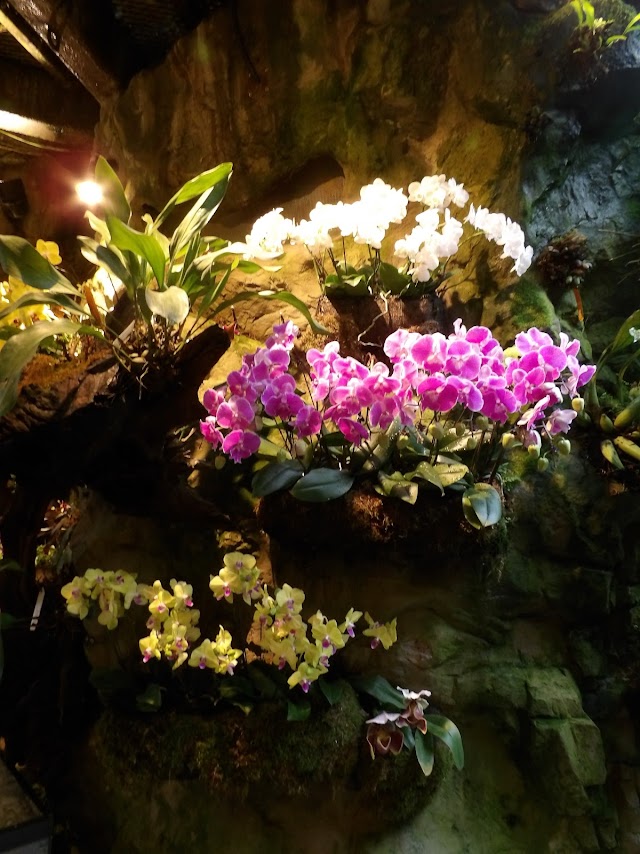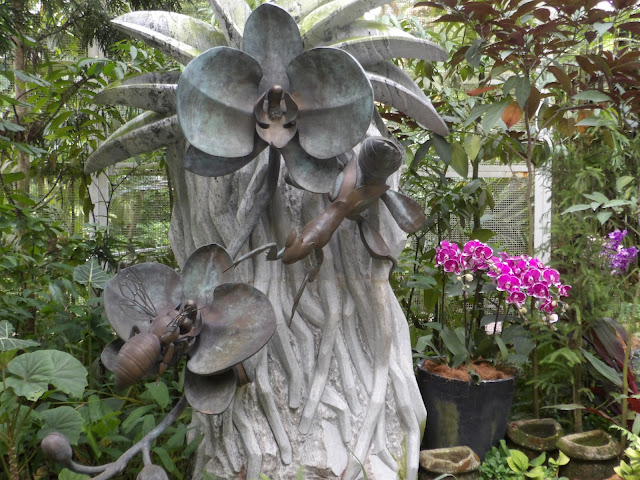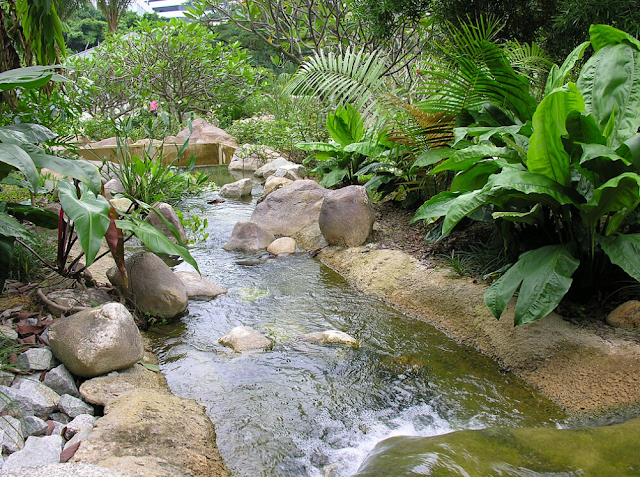Tolin's 2024 World Cruise blog posts, Day 66 Mar 15, 2024, Singapore, Singapore; Singapore City Tour and National Orchid Garden
After early years of turbulence and despite lacking natural resources and a hinterland, the nation rapidly developed to become one of the Four Asian Tigers. With its growth based on international trade and economic globalization, it integrated itself with the world economy through free trade with minimal-to-no trade barriers or tariffs, export-oriented industrialization, and the large accumulation of received foreign direct investments, foreign exchange reserves, and assets held by sovereign wealth funds. As a highly developed country, it has one of the highest GDP per capita (PPP) in the world. Identified as a tax haven, Singapore is the only country in Asia with a AAA sovereign credit rating from all major rating agencies. It is a major aviation, financial, and maritime shipping hub and has consistently been ranked as one of the most expensive cities to live in for expatriates and foreign workers. Singapore ranks highly in key social indicators: education, healthcare, quality of life, personal safety, infrastructure, and housing, with a home-ownership rate of 88 percent. Singaporeans enjoy one of the longest life expectancies, fastest Internet connection speeds, lowest infant mortality rates, and lowest levels of corruption in the world.
Singapore is a unitary parliamentary republic with a Westminster system of unicameral parliamentary government, and its legal system is based on common law. While the country is a multi-party democracy with free elections, the government under the People's Action Party (PAP) wields significant control and dominance over politics and society. The PAP has governed the country continuously since full internal self-government was achieved in 1959, currently holding 79 out of 93 elected seats in Parliament. One of the five founding members of ASEAN, Singapore is also the headquarters of the Asia-Pacific Economic Cooperation Secretariat, the Pacific Economic Cooperation Council Secretariat, and is the host city of many international conferences and events. Singapore is also a member of the United Nations, the World Trade Organization, the East Asia Summit, the Non-Aligned Movement, and the Commonwealth of Nations.
Lots more info: https://en.wikipedia.org/wiki/Singapore
The Singapore Botanic Gardens is a 165-year-old tropical garden located at the fringe of the Orchard Road shopping district in Singapore. It is one of three gardens, and the only tropical garden, to be honored as a UNESCO World Heritage Site. The Botanic Gardens has been ranked Asia's top park attraction since 2013, by TripAdvisor Travelers' Choice Awards. It was declared the inaugural Garden of the Year by the International Garden Tourism Awards in 2012.
The National Orchid Garden is the main attraction within the Botanic Gardens. Located on the mid-western side of the Garden on a hilly three-hectare site. It is at the forefront of orchid studies and a pioneer in the cultivation of hybrids, complementing the nation's status as a major exporter of cut orchids. Aided by the equatorial climate, it houses the largest orchid collection of 1,200 species and 2,000 hybrids. It was opened on 20 October 1995 by Senior Minister Lee Kuan Yew.
There are a number of attractions within the Orchid Garden, including the following -
Burkill Hall: Burkill Hall is a colonial plantation bungalow built in 1886. It used to be the director's house and was named in honor of the only father and son pair to hold the post of Director of Singapore Botanic Gardens, Isaac and Humphrey Burkill. The ground level serves as an exhibition area, showcasing information on the different hybrids named after VIPs who have visited the garden.
VIP Orchid Garden: located at the back of Burkill Hall, it displays hybrids of the most popular VIP orchids. Notable ones include Dendrobium Memoria Princess Diana, Dendrobium Margaret Thatcher, × Renantanda Akihito, Dendrobium Masako Kotaishi Hidenka,
Dendrobium Elizabeth and Vanda Gloria Macapagal Arroyo. More than 100 celebrities, dignitaries, and visiting heads of states have been honored by Singapore's orchid diplomacy program.
Orchidarium: A haven for serious orchids enthusiasts, the Orchidarium houses natural species in a tropical setting. More info: https://mothership.sg/2021/04/tropical-montane-orchidetum-botanic-gardens/
Tan Hoon Siang Misthouse: Tan Hoon Siang was a descendant of Tan Tock Seng, who was a philanthropist and founder of the Tan Tock Seng Hospital. The mist house contains a colorful collection of different hybrids. It also has a small collection of fragrant orchids like Vanda Mimi Palmer.
Lady Yuen-Peng McNeice Bromeliad House: Named in honour of its sponsor, the Bromeliad House showcases plants from the family Bromeliaceae, which includes the pineapple. The unique collection of bromeliads on display was acquired from Shelldance Nursery in the United States in 1994.
Coolhouse: The Coolhouse tries to recreate the environment of a tropical highland forest and showcases orchids that are normally only found in the tropical highland areas.
The Botanic Gardens was founded at its present site in 1859 by the Agri-horticultural Society. It played a pivotal role in the region's rubber trade boom in the early twentieth century when its first scientific director, Henry Nicholas Ridley, headed research into the plant's cultivation. By perfecting the technique of rubber extraction, which is still in use today, and promoting its economic value to planters in the region, rubber output expanded rapidly. At its height in the 1920s, the Malayan peninsula cornered half of the global latex production.
Early in the nation's independence, Singapore Botanic Gardens' expertise helped to transform the island into a tropical "Garden City", an image and moniker for which the nation is widely known. In 1981, the hybrid climbing orchid, Vanda Miss Joaquim, was chosen as the country's national flower. Singapore's "orchid diplomacy" honors visiting head of states, dignitaries, and celebrities by naming its finest hybrids after them; these are displayed at its popular VIP Orchid Gardens.
The Gardens is opened from 5 a.m. to 12 midnight daily and is free to enter, except for the National Orchid Garden. More than 10,000 species of flora are spread over its 200 acres, which is stretched vertically; the longest distance between the northern and southern ends is 1.6 miles. The Botanic Gardens receives about 4.5 million visitors annually.
More info: https://en.wikipedia.org/wiki/Singapore_Botanic_Gardens#History

































































Comments
Post a Comment